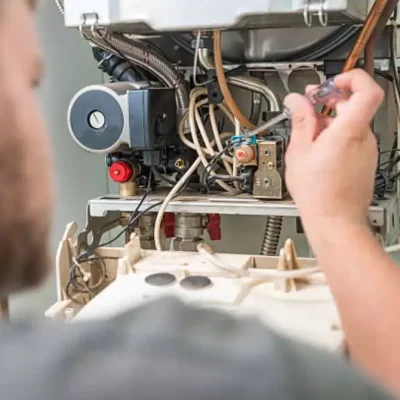Créer votre compte gratuitement et accéder à tous les contenus de Décision Achats !
En version numérique
Ne rien manquer de vos actualités préférées
En version numérique
Ne rien manquer de vos actualités préférées
En version numérique
Ne rien manquer de vos actualités préférées
En version numérique
Ne rien manquer de vos actualités préférées
En version numérique
Ne rien manquer de vos actualités préférées
Vous avez déjà un compte
Vous n’avez pas encore de compte
Prenez 1 minute pour vous inscrire et boostez votre activité en rejoignant la communauté Decision-achats.fr !
Abonnez-vous pour recevoir nos meilleurs articles
Partagez cet article par email
Votre message a bien été envoyé!
Concourez aux meilleures initiatives de la fonction achat avant le 14 avril
AccueilPerformance AchatsRetail
Depuis trop longtemps et trop souvent, le service Comptabilité Fournisseurs est considéré comme une simple fonction back-office nécessaire, mais quelque peu répétitive..
Les factures arrivent, les paiements sont faits. Mais à l’heure où les Directeur Finances ont pris conscience de la valeur ajoutée que la Comptabilité Fournisseurs peut apporter (par exemple, l’amélioration des flux de trésorerie), ces départements sont maintenant encouragés à développer et à mettre en place de meilleures pratiques.
Chaque service Comptabilité Fournisseurs doit s’efforcer de devenir un service de premier ordre. Pour ce faire, il est nécessaire de transformer la manière dont le processus de Comptabilité Fournisseurs global est géré, et en priorité le traitement des factures. Cela inclut la saisie des données, le rapprochement des factures, le workflow de validation et, enfin, le paiement.
Les entreprises comprennent maintenant que, bien qu’il ne représente qu’une étape dans le cycle Procure-to-Pay (P2P), le processus d’écritures comptables est la seule étape qui est chargée de garantir l’exactitude, la ponctualité et l’absence de fraude dans les paiements.
Essentiellement, le service Comptabilité Fournisseurs reçoit des factures et les données sur ces factures doivent être alignées avec les bonnes données de comptes et de centre de coûts, soit par automatisation, soit par saisie manuelle. Ensuite, ces factures doivent passer par le 3 ways matching pour correspondre avec les bons de commande et, si possible, avec les avis de réception. À ce stade, les factures sont soit envoyées directement à votre système ERP, soit transmises aux personnes appropriées pour validation, puis publiées pour paiement.
Mais ce n’est pas tout : il faut aussi tenir compte du temps que le service Comptabilité Fournisseurs consacre à des tâches liées à la facturation telles que la gestion des exceptions, le traitement des demandes des fournisseurs concernant les paiements, la recherche de documents papier (bon de commande et réception de marchandises) et l’identification des approbateurs pour s’assurer que le paiement est effectué à temps.
Cependant, certaines mesures peuvent vous permettre d’éliminer ou de minimiser les problèmes qui empêchent votre service Comptabilité Fournisseurs de donner le meilleur de lui-même.
En optimisant les écritures comptables en rationalisant le traitement des factures, vous pouvez garantir l’exactitude des factures et les envoyer automatiquement et directement à l’ERP ou au système comptable pour paiement, sans aucune intervention humaine : ainsi, votre service Comptabilité Fournisseurs peut se concentrer sur les exceptions.
Ce gain de temps supplémentaire peut être utilisé pour trouver des moyens d’augmenter les flux de trésorerie, d’améliorer les relations avec les fournisseurs, d’identifier des opportunités de conditions de paiement avantageuses et de mieux gérer le fonds de roulement.
En se concentrant sur chacune des dix pratiques ci-dessous, le service Comptabilité Fournisseurs pourra s’assurer que les paiements effectués sont exacts, ponctuels et exempts de fraude.
Chacune des pratiques de cette liste doit être suivie, que vous automatisiez ou non vos processus avec une solution de gestion de la Comptabilité Fournisseurs. Cependant, la réalité est que l’optimisation de ces pratiques, et donc de vos processus, devient beaucoup plus probable quand vous éliminez les factures papier et les processus manuels qui sont intrinsèquement coûteux, chronophages et sujets à l’erreur humaine.
Quelle que soit la taille de votre entreprise, lorsque votre service Comptabilité Fournisseurs passe au digital et utilise un logiciel de génération des écritures comptables, vous constaterez rapidement les avantages offerts par l’automatisation des processus, y compris le fait que le coût de traitement d’une facture est de 2,94 $ pour les meilleures organisations Comptabilité Fournisseurs contre une moyenne de 15,96 $ pour les autres.
Le traitement des factures prend du temps. L’automatisation du processus élimine le fardeau du suivi des factures assuré par vos équipes, en le confiant à un système qui gérera les étapes automatiquement, y compris le rapprochement. Si vous avez des pics saisonniers de volume de factures, une solution automatisée vous permet d’augmenter vos capacités de traitement.
Selon la taille de votre entreprise et le volume de factures reçues, il est essentiel de garder une trace des montants et des dates de règlement à venir pour gérer la trésorerie tout en évitant les retards de paiement, qui peuvent nuire à vos relations avec les fournisseurs. Lors de la définition des priorités, les factures doivent évidemment être payées dans l’ordre, en fonction de la date d’échéance et des délais de paiement.
Si vous recevez des centaines, voire des milliers de factures chaque semaine, ou si vous avez une activité saisonnière où le volume de factures monte en flèche à certaines périodes de l’année, il peut être difficile d’assurer des paiements exacts et en temps opportun. Il est également nécessaire de faire correspondre la facture avec le bon de commande et la réception des marchandises (le cas échéant). Vous devez éviter de transmettre une facture pour paiement tant que vous n’avez pas vérifié que le produit est reçu et correspond à la facture, ou que le service a été effectué.
Vous devez également être conscient(e) des possibilités de remise pour paiement anticipé, offertes par de nombreux fournisseurs. Étant donné que l’automatisation de la Comptabilité Fournisseurs accélère considérablement le processus d’approbation, vous serez en mesure d’identifier ces remises et d’en bénéficier. S’il n’y a pas d’escompte, il est alors préférable de payer votre facture à temps, mais pas avant son échéance, afin de mieux gérer votre trésorerie.
Plus le système est complexe, plus il y a de risques d’erreurs ou de retards de paiement. Examinez vos flux de travail existants et identifiez les goulots d’étranglement dans le processus d’approbation. La rationalisation du processus de validation nécessite également la centralisation et la standardisation du traitement et des rapports dans l’ensemble de l’organisation.
Les processus papier et manuels ont tendance à ralentir les choses. L’automatisation peut réduire le temps de traitement des factures jusqu’à 70 %, tout en garantissant l’exactitude et la ponctualité des paiements. Il est essentiel que votre service Comptabilité Fournisseurs mette en place des règles détaillées, même avec l’automatisation.
Les entreprises exploitant plusieurs sites autorisés à faire des achats doivent s’assurer que toutes les factures sont acheminées vers un emplacement centralisé pour le traitement et le paiement. Si vous utilisez toujours un système manuel hérité, vous auriez peut-être intérêt à vous limiter à deux passages à la banque par mois.
Vous ne pouvez pas gérer ou améliorer ce que vous ne pouvez pas mesurer. Ainsi, si vous apportez des modifications à vos processus, définissez des objectifs et des KPI spécifiques pour déterminer si votre service adhère bien aux processus nouveaux ou révisés, en particulier une fois que vous avez automatisé ces processus.
Commencez par évaluer la situation actuelle de votre service en ce qui concerne les métriques indiquées ci-dessous. Ensuite, mesurez les performances du service après la mise en œuvre d’un système automatisé. Les métriques que vous devriez examiner incluent :
Une mesure continue montrera la valeur de l’automatisation. Cependant, l’absence d’automatisation ne devrait pas être une excuse pour ne pas suivre ces KPI.
Lorsqu’il s’agit d’argent, il y a toujours une possibilité de fraude. La fraude peut provenir de plusieurs sources : les cybercriminels, les fournisseurs, voire vos propres employés. Et lorsque les chèques papier sont la source de paiement, le risque de fraude est encore plus élevé. C’est pourquoi l’atténuation de ce risque est directement liée au respect des politiques et procédures.
Les cybercriminels exploitent un large éventail d’escroqueries qui ne visent pas nécessairement à pirater votre organisation, y compris lorsqu’ils imitent l’adresse e-mail d’un fournisseur et demandent que le paiement soit fait à un autre compte. Les employeurs peuvent créer des comptes fournisseurs fictifs ; les fournisseurs peuvent avoir leurs propres employés qui tentent la même chose.
L’automatisation des écritures comptables aide à lutter contre ce problème grâce à un système de suivi des validations plus rigoureux et une piste d’audit claire. Une visibilité en temps réel sur l’état de chaque facture et la correspondance à 3 facteurs automatisée permettront de détecter les anomalies et les erreurs pures et simples et de les signaler pour une enquête plus approfondie.
Les étapes pour éliminer les paiements en double sont sensiblement les mêmes que les mesures de détection et de lutte contre la fraude, sauf qu’ici, la situation n’est généralement pas intentionnelle. Encore une fois, les processus manuels et les documents papier peuvent signifier que des factures en double sont envoyées pour paiement. Un fournisseur peut envoyer une facture par courrier, puis envoyer la même facture par e-mail pour s’assurer qu’elle est bien reçue. Avec les systèmes manuels, en particulier si vous recevez beaucoup de factures, un employé peut transmettre les deux factures pour paiement.
Votre système de paiement doit être capable de signaler la facture en double, arrêtant ainsi le paiement. Cela suppose que votre système peut détecter la majorité, voire la totalité des doublons. Si vous gérez l’approbation des factures manuellement, vous ne pouvez pas simplement vous fier au système ; vous devez demander à la Comptabilité Fournisseurs de surveiller les factures en permanence pour éviter les paiements en double. La transition du traitement manuel au traitement automatisé éliminera les paiements en double.
Plus le nombre de personnes ayant accès au processus de paiement est élevé, plus les erreurs et les paiements en double sont susceptibles de se produire. Combattez cela en mettant en place des contrôles internes, y compris une séparation distincte des tâches par employé pour que personne ne contrôle toutes les étapes (de l’approbation de la facture au paiement) et que seules des personnes spécifiques puissent accéder au fichier principal du fournisseur. Mettez en place des processus internes de contrôle de la Comptabilité Fournisseurs qui révéleront où se produisent les erreurs et les goulots d’étranglement.
Les contrôles au niveau du système aident à identifier et à corriger les inefficacités structurelles du processus, ce qui vous aidera à éviter les failles de sécurité et à détecter les fraudes potentielles. Encore une fois, étant donné que l’automatisation limite le besoin d’interactions humaines multiples, il y aura automatiquement moins de personnes impliquées dans le processus.
Lorsque vous vous efforcez de standardiser vos conditions de paiement, vous libérez du fonds de roulement, vous contrôlez mieux vos flux de trésorerie et vous optimisez le traitement des paiements. Ceci est particulièrement important dans les entreprises qui utilisent de nombreux fournisseurs, chacun souhaitant négocier ses propres conditions de paiement. La normalisation de ces conditions contribue à rendre votre flux de travail plus efficace. Cela empêche également les négociations ad hoc avec des fournisseurs individuels qui peuvent avoir un impact négatif sur votre DPO, affectant ainsi le résultat du service Comptabilité Fournisseurs.
Cependant, l’instauration de conditions de paiement standard ne doit pas empêcher les renégociations. Votre équipe doit faire ses recherches et s’assurer que votre fournisseur propose des conditions identiques ou meilleures que celles qu’il propose à des entreprises similaires. Si vous êtes désavantagé(e), il est temps de renégocier. Bien que les factures arrivent généralement sur un cycle de 30, 60 ou 90 jours, vous constaterez peut-être que profiter des remises pour paiement anticipé l’emporte sur d’autres avantages.
Vous devez également tenir compte des modes de paiement lorsque vous négociez avec les fournisseurs. La réduction du nombre de chèques papier à remplir et envoyer par courrier réduira les coûts et les retards de paiement dus à des problèmes d’acheminement. Nous vous conseillons de centraliser et de gérer tous vos paiements fournisseurs par voie électronique, avec diverses méthodes de paiement, y compris les virements ou les cartes virtuelles.
Les exceptions restent un défi majeur pour l’AP ; elles entraînent des retards de paiement et, souvent, un temps excessif pour traiter les demandes et les préoccupations des fournisseurs (à la fois par téléphone et par e-mail). Il est essentiel de résoudre ces problèmes rapidement pour maintenir un flux de trésorerie suffisant. Un processus d’approbation automatisé enverra les factures correspondant aux bons de commande directement dans l’ERP pour paiement : ainsi, votre équipe AP se contente de gérer les exceptions. Étant donné que ces exceptions sont rapidement identifiées, elles peuvent être résolues dans les délais.
La rationalisation de votre procédure de suivi et de résolution des litiges est avantageuse pour vous et vos fournisseurs. Les paiements dans les temps améliorent vos relations avec les fournisseurs. À l’inverse, le suivi des litiges peut vous permettre d’identifier des fournisseurs qui ont constamment des problèmes, et vous amener à rechercher des alternatives. De votre côté, vos collaborateurs passent moins de temps à répondre aux appels et aux e-mails, et peuvent donc se concentrer davantage sur des tâches à valeur ajoutée.
Dans un environnement commercial mondialisé, les fournisseurs peuvent être acquis, les coordonnées peuvent changer et les entreprises peuvent déménager. Ces types de changements peuvent empêcher votre système de reconnaître les factures, et cela peut entraîner des retards de paiement ou pire, des paiements envoyés à la mauvaise adresse.
Une solution d’automatisation de la Comptabilité Fournisseurs qui offre un portail fournisseur éliminera ces problèmes, puisque les fournisseurs pourront s’y connecter pour modifier leurs informations si nécessaire. Mais pour cela, il faut que votre solution et le système de vos fournisseurs soient compatibles.
Le respect de ces pratiques et l’amélioration constante du processus de Comptabilité Fournisseurs contribueront à optimiser le processus d’approbation, à éliminer les retards de paiement (et les pénalités de retard) et, en fin de compte, à vous donner un meilleur contrôle sur vos flux de trésorerie. Mais les processus papier et manuels ne feront que rendre plus difficile la réalisation de vos objectifs. La mise en œuvre d’une solution d’automatisation des écritures comptables fera passer votre service Comptabilité Fournisseurs au niveau supérieur.
La rédaction vous recommande
Votre entreprise a-t-elle besoin de faire évoluer ses processus Achats?
Les facteurs pouvant ralentir la transformation de la Direction Finance
Les erreurs les plus fréquemment commises lors de la transformation des Achats (et comment les éviter)
L’importance des KPI dans le cadre de la transformation des Achats
Faire de la Direction Achats un partenaire stratégique de confiance
Élaborer la feuille de route qui garantira la réussite de la transformation de votre Direction Achats
En version papier
Recevez le magazine directement
chez vous
8.75 € / mois
En version numérique
Ne rien manquer de vos actualités préférées
Suivez-nous:
À propos
Decision-achats.fr et le magazine Décision Achats sont les médias leader en France de l’information B2B et de la communauté professionnelle des acheteurs. Deux outils indispensables pour les pros des achats pour les prestataires de la filière achat.
À propos
Sites du groupe
Services
Fils RSS
Contactez-nous
Abonnement








